Cows eat grass, but when winter comes and grass is scarce, it is important to know that hay is vital for cows’ survival. Thankfully, cows can eat a wider variety of hay than horses.
There are a lot of types of hay that cows can eat, and the right type for your cows often depends on where you live. Knowing the differences in cattle hay and what each offers is imperative for any cattle owner.
Here are 15 types of hay that cows can eat.
Table of Contents
1. Alfalfa Hay

Alfalfa hay is high-protein legume hay that is a great choice for cows during any time of the year. This type of hay contains somewhere between 15% and 25% protein.
Alfalfa is not the first choice for many cattle farmers; however, it is a great supplement to feed your cattle alongside corn. Alfalfa hay’s high protein content is a great option to mix with other hays with lower protein levels.
Protein is vital for the growth of young cows, pregnant cows, low-weight cows, and cows that are still feeding their calves.
Alfalfa hay will provide the protein and digestive support all cattle need.
Alfalfa does have one downfall: it can cause a rather dangerous cattle ailment called “bloat.” When feeding your cattle alfalfa, keep that in mind and consider mixing it with legumes like sainfoin, which is bloat-safe.
2. Bermuda Grass Hay
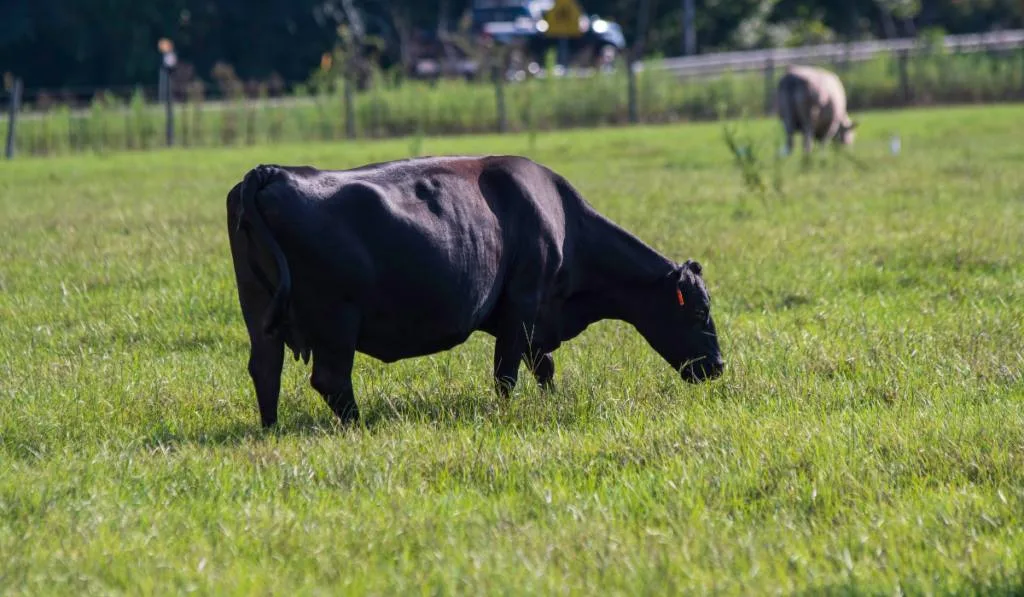
Bermuda hay is another hay for cows that is relatively popular in the United States.
On average, this hay has around 9.2% crude protein depending on the variety, an amount that may not be sufficient for lower weight, growing, or pregnant cattle.
This type of hay is popular despite its moderate protein count because it grows well and is abundant in many southeastern and central states.
Bermuda grass is a great option for healthy cows or when you feed it as a supplement to pregnant, lactating, or growing cattle.
Due to its relatively low protein content, this type of hay makes a great mix when combined with high-protein grasses like alfalfa or red clover.
3. Oat Hay
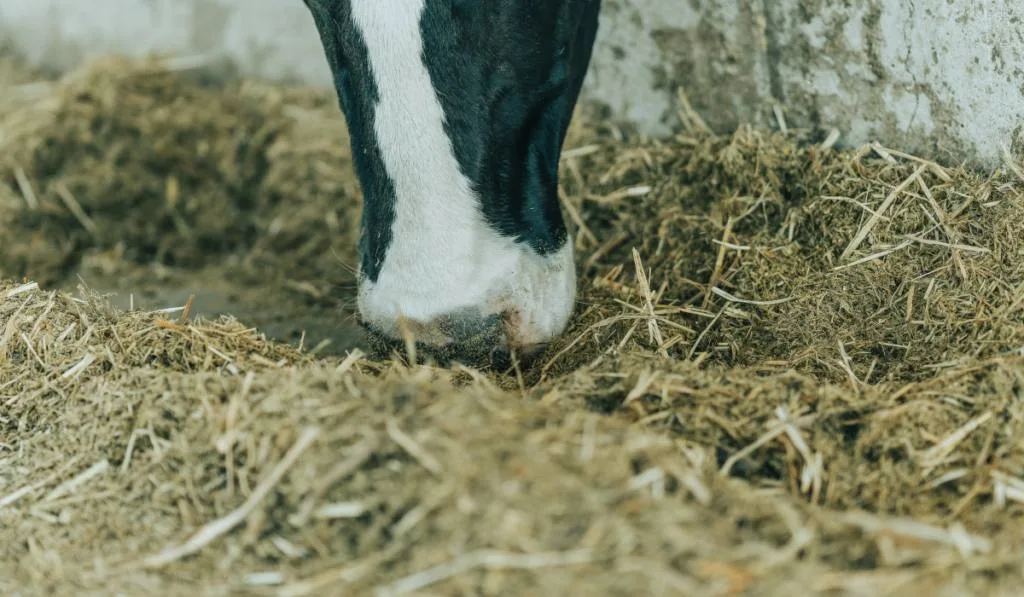
Oat hay is a great option for cattle because it contains a moderate amount of protein. While not as rich as alfalfa in the protein department, oat hay contains an average of 9.1% crude protein.
Oat hay is sometimes high in nitrates, a substance that is not safe for cattle in large quantities. Luckily, producers can have their hay tested to ensure the nitrate level is low or non-existent before selling.
To combat possible high nitrate levels, cattle owners can feed lower nitrate foods along with the hay to dilute it. If they are still concerned, they can have the hay tested themselves.
4. Timothy Grass Hay
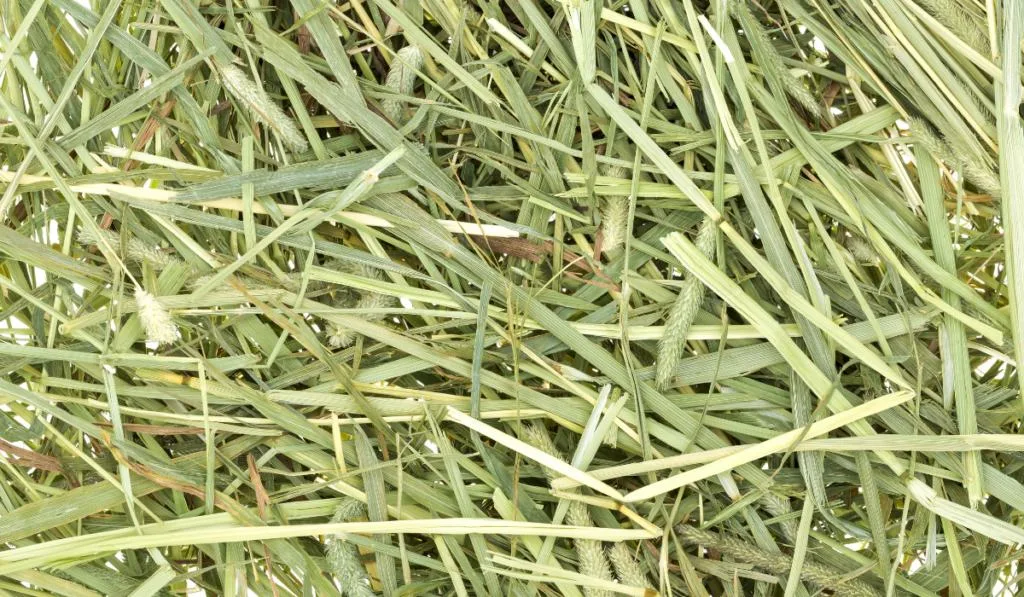
Timothy grass hay is a popular horse hay, but it is also a good hay for cattle as well.
Timothy grass hay has an average crude protein content of 8%, which also varies between producers and the quality of the grass.
Timothy hay is a favorite among cattle farmers because of its high fiber content that also provides ample energy to cattle. Thanks to its lower protein content, this type of hay is also a great option to supplement with alfalfa or other higher protein hays.
Timothy hay is great for both beef and dairy cattle because it is safe for pregnant cows, and it does not tend to cause digestion issues.
This type of hay is ideal for any cow farm, especially if you live in more northern states where it grows best.
5. Red Clover Hay

Red clover hay is an excellent cattle hay option because it contains so many vitamins and nutrients. It is very tasty to cows, and it is often touted as being better for digestion than its legume cousin, alfalfa.
Red clover hay has an average of 13% protein, depending on when hay producers harvest it, and may even be higher in many instances.
Red clover’s tremendous nutritional content, makes red clover hay a great option for cattle, including those that are pregnant or lactating.
6. Barley Hay
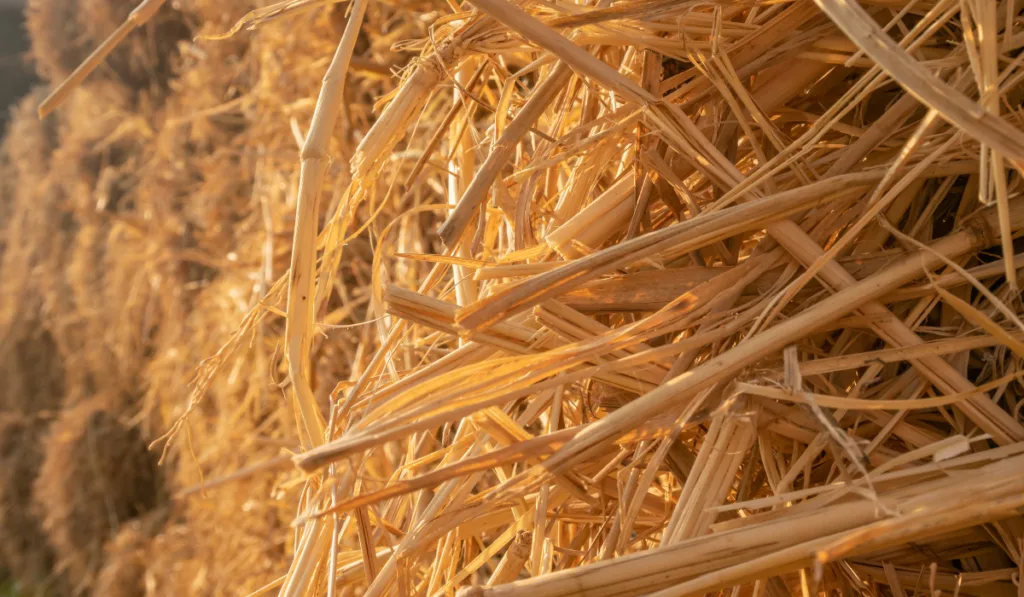
Barley hay may not be the first option for many cattle owners, but it is an acceptable hay option when other hays are scarce.
This type of hay has about 7.8% crude protein on average, but most cattle do not seem to enjoy eating it as much as other hay.
Mixing barley with other hay is always a solid option; however, mixing barley hay with only alfalfa is not recommended.
To avoid bloat with a barley-alfalfa hay mix, most cattle owners suggest adding a grass hay and an ionophore, a food additive that can reduce the possibility of bloating in cattle.
7. Orchard Grass Hay
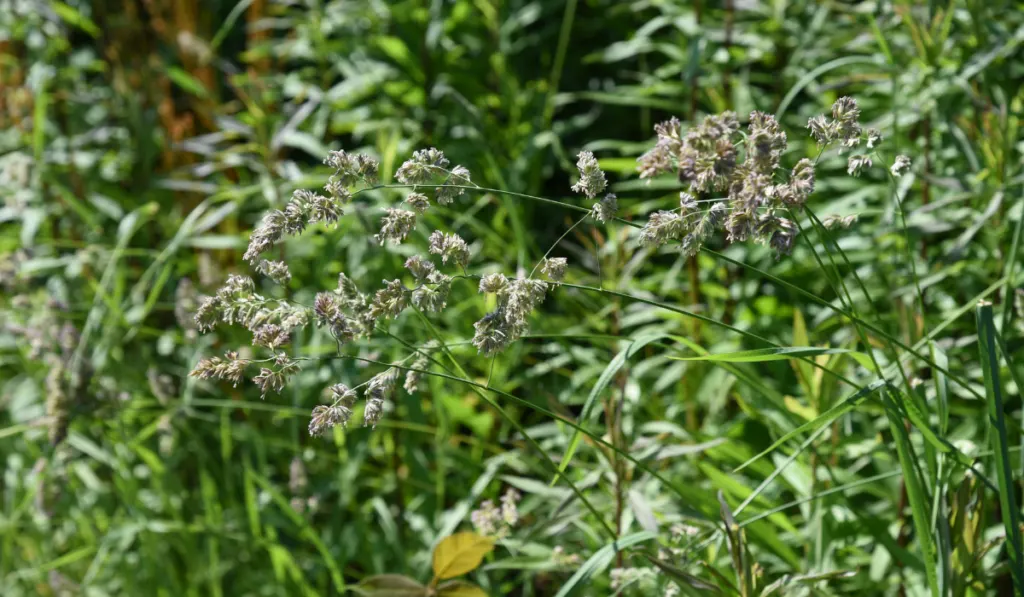
Orchard grass hay is another good hay for cattle thanks to its relatively high protein content of 10% -12%, depending on the quality.
This hay provides a significant number of calories, and it is often easier to find than other hays like timothy.
This type of hay is a favorite among cattle, and it is good for beef and dairy cows alike.
Thanks to its high protein content, orchard grass hay is ideal for lactating and pregnant cattle.
It is not ideal to mix orchard grass with legumes like alfalfa or red clover, as both of those additions would have a significant protein content that may be too rich or unnecessary for many cows.
8. Smooth Bromegrass Hay

Another nutritious cow hay is smooth bromegrass hay. This type of hay has about 8%-10% crude protein content, depending on the quality.
Smooth bromegrass is palatable hay for cattle. It is a great choice for growing, pregnant, or lactating cattle. And in the northern parts of the country, hay producers sell it.
9. Tall Fescue Hay
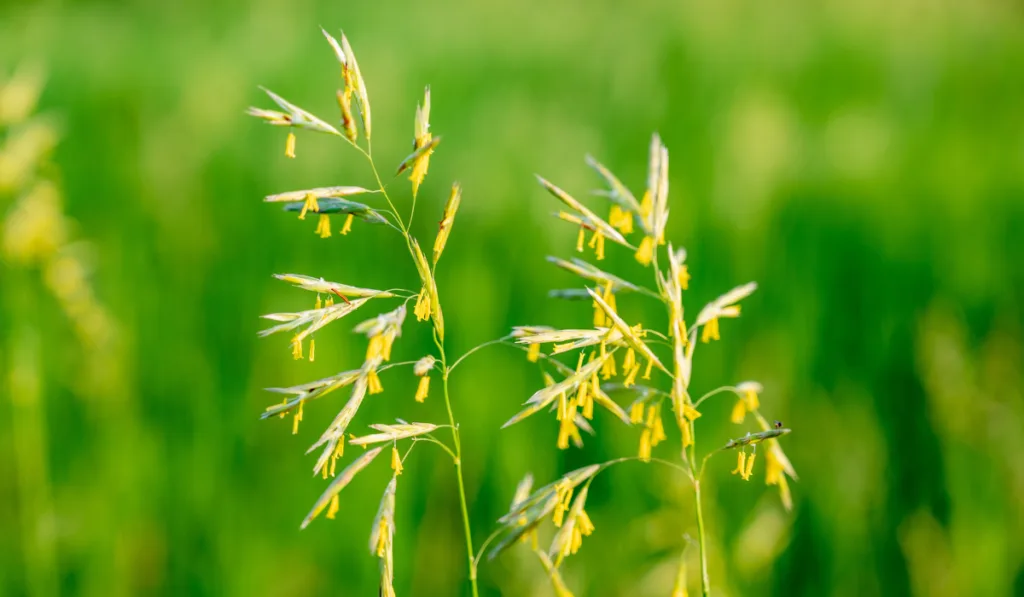
Tall fescue hay is a popular cattle hay option thanks to its abundant supply in North America. This hay contains between 7% to 12% protein, depending on the quality of the grass harvested.
Even though it is popular, some forms of tall fescue hay can pose a threat to cattle called fescue toxicity.
When feeding tall fescue hay to your cattle, watch your cattle for fescue toxicity signs like weight issues, lameness, heat intolerance, and patchy body hair.
10. Tifton 85 Hay
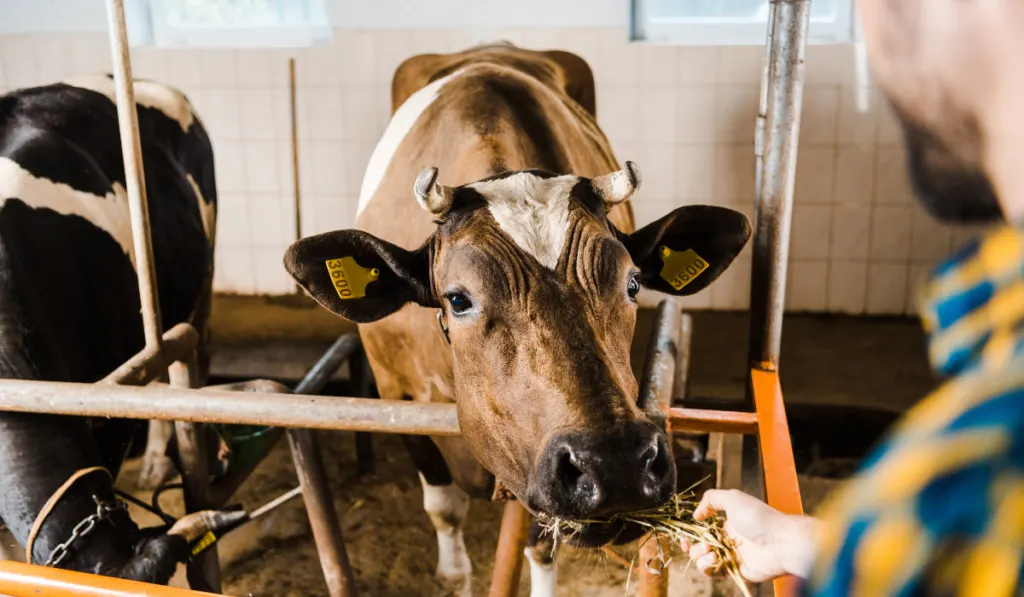
Tifton 85 is a type of Bermuda grass hay that works perfectly for cattle.
This hay is a cross between African tall-grass and Bermuda grass, and it was initially crafted with cattle in mind.
The protein content for this type of hay is 12% to 13% on average but can reach up to 17% in the right conditions.
Tifton 85 is highly digestible and a great option for almost any cattle operation.
If Tifton 85 is available in your area, take a chance on this hay and see how your cows like it.
11. Ryegrass Hay
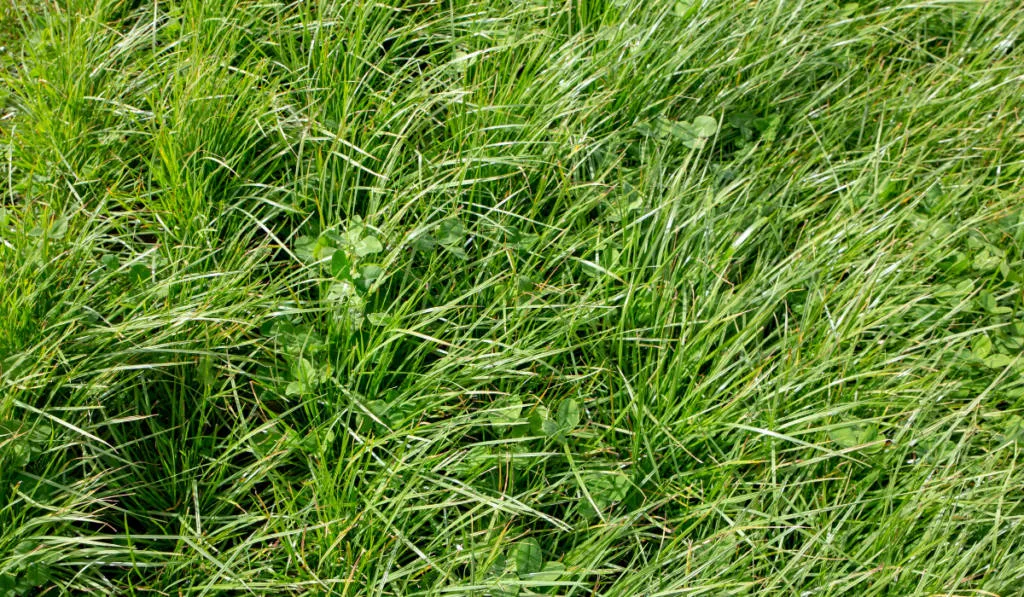
Ryegrass hay is a type of hay for cattle that may not be popular but satisfactory when needed. It has about 7.9% crude protein, is highly palatable, and is gentle on a cow’s digestion.
Ryegrass hay is nutritional and safe for pregnant and lactating cattle.
Ryegrass grows best in the southern parts of the United States, so it is usually easier to find in the South.
The possible downfall of ryegrass hay is ryegrass toxicity, a dangerous poisoning that can occur from livestock consuming ryegrass or ryegrass hay that a specific bacterium has infected.
Luckily, hay producers can test for the bacterium that causes ryegrass toxicity and reassure cattle owners that their hay is safe.
Cattle owners can have their ryegrass hay tested if the seller did not offer a vendor declaration that the hay tested negative. They can also watch for neurological symptoms of ryegrass toxicity, like fatigue, drooping heads, stumbling, and convulsions.
12. Reed Canary Grass Hay
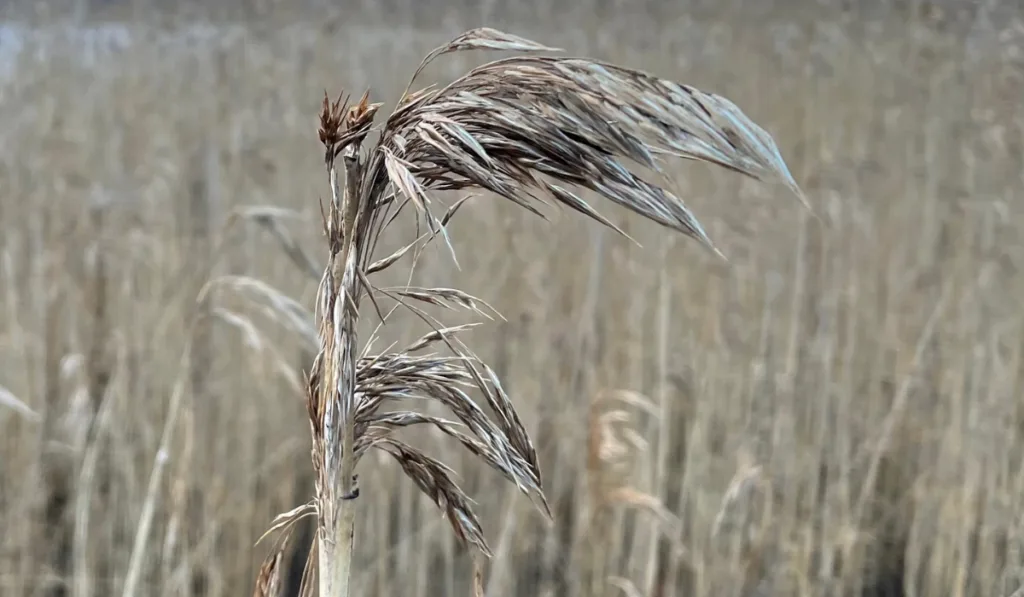
Although it is not a very popular option, reed canary grass hay is a type of hay that grows in wetlands. It has a high crude protein content of 15% to 17%, it is full of nutrients, and is relatively easy for cattle to digest.
Some cattle owners may worry that reed canary grass hay has the potential for prussic acid poisoning, which is often fatal in cattle.
However, the hay drying process reduces the prussic acid in reed canary grass hay, so it does not typically cause cattle any issues.
13. Sudan Grass Hay
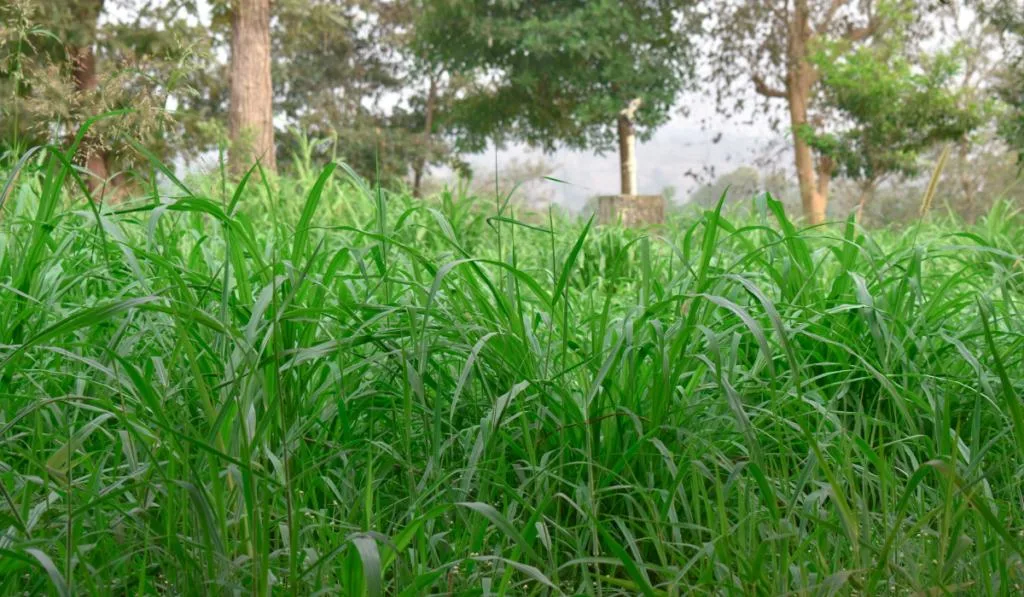
Sudan grass hay is a Brazilian hay that is great for cattle.
The crude protein content of Sudan grass hay is 10% on average, although certain varieties can reach 18% or more.
This type of hay contains plenty of fiber and nutrients that cattle need in their daily diet. Sudan grass hay is a solid option for cattle hay if it is available in your area.
14. Meadow Hay
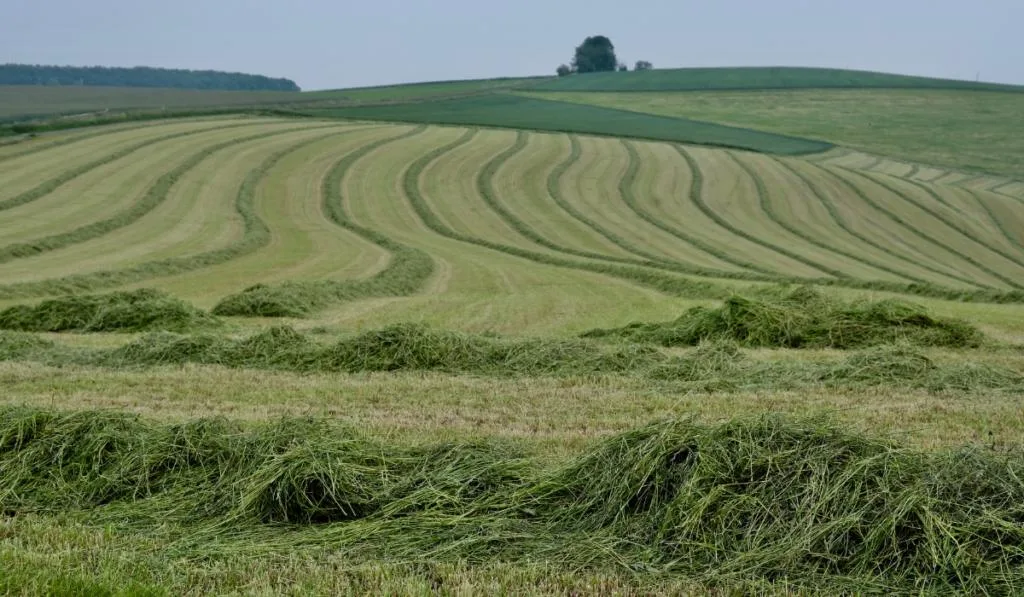
Meadow hay is sometimes confused with mixed hay, but it is not necessarily the same.
In hayfields where specific grass seeds are not planted, natural, uncultivated grasses create meadow hay or wild hay.
Typically, meadow hay does not have an extremely high protein content. The actual percentages can vary from field to field and sometimes from bale to bale.
Usually, this type of hay is usually very tasty to cows, making it a sustainable meal for most cattle.
15. Mixed Hay

Mixed hay typically refers to specific mixes of hay. Producers combine certain types of hay to improve the nutritional content, usually with a focus on crude protein.
Many times, hay producers or cattle owners will mix alfalfa with lower protein hays like Bermuda grass or oat hay.
The following are some of the most common hay mixes for cattle:
- Alfalfa/Bermuda Grass Hay
- Alfalfa/Timothy Hay
- Alfalfa/Oat Hay
- 3-Way Hay: Alfalfa /Oat/Bermuda
- Alfalfa/Orchard Grass Hay
5 Common Hay Forms
Cattle hay comes in various forms and the right option depends on each farm’s needs.
Small Square Bales
Small square bales are square, or rectangular-shaped bales of hay that weigh between 50 and 100 pounds on average. This makes them easy to carry, easy to feed, and easy to transport around the farm.
Square bales may not seem ideal for large cattle operations, but they are great options for smaller farms or for when you have cows you must separate from the rest of the herd.
Having smaller, easy-to-transport hay bales like these are a lifesaver on cattle farms.
Large Square Bales
Large square bales are extremely large, rectangular-shaped hay bales that are becoming more and more popular.
These bales are huge, weighing between 1,000 to 2,000 pounds and usually require a tractor to transport.
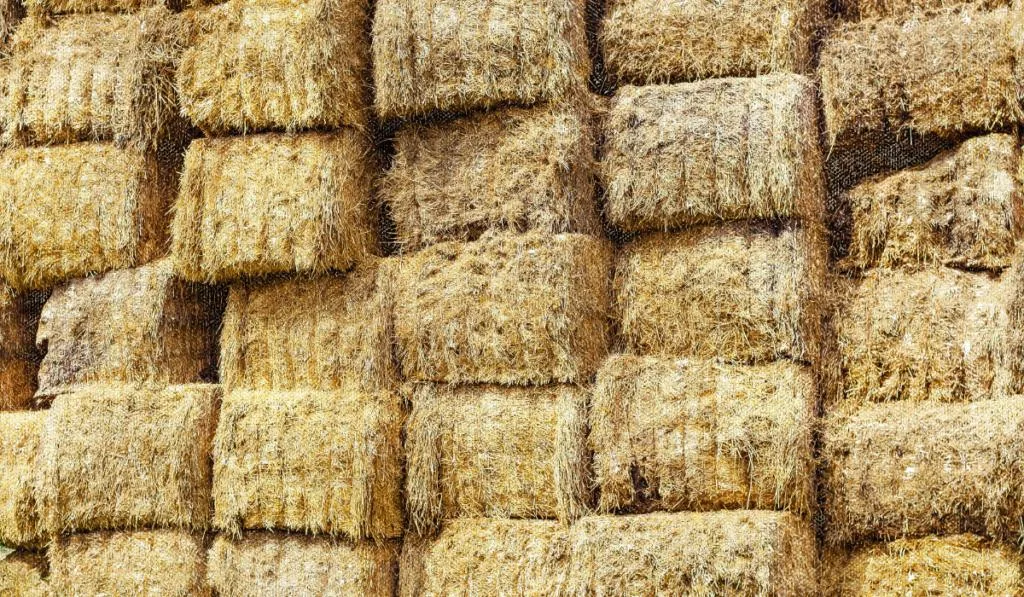
Round Bales
Round bales of hay are large, cylindrical bales that can range between 4×4 feet, 4×5 feet, 5×5 feet, or 5×6 feet. The larger the size, the more hay it contains and the more it will cost buyers.
Round hay bales are great for feeding several cows at a time.
Cattle owners can even roll any untwined or unnetted round bale down a small hill so that it unrolls itself. This makes a long line of hay that allows many cows to eat the same round bale at one time.
Cubes
Some cow owners feed their cows small hay cubes when the cows need additional protein or nutrients. Cattle owners can toss out the cubes and feed them as free-choice food so that each cow gets their fair share.
The downfall of cubes is that it would take a lot of cubes to meet the requirements of a cow, so cubes are often added as a supplement instead of a complete hay replacement.
Pellets
Hay is also sold in pellets, and these hay pellets are safe for cattle.
For the most part, cattle owners feed hay pellets as a supplement when baled hay is scarce. Pellets are sometimes easier to come by since local farm supply retailers often sell them.
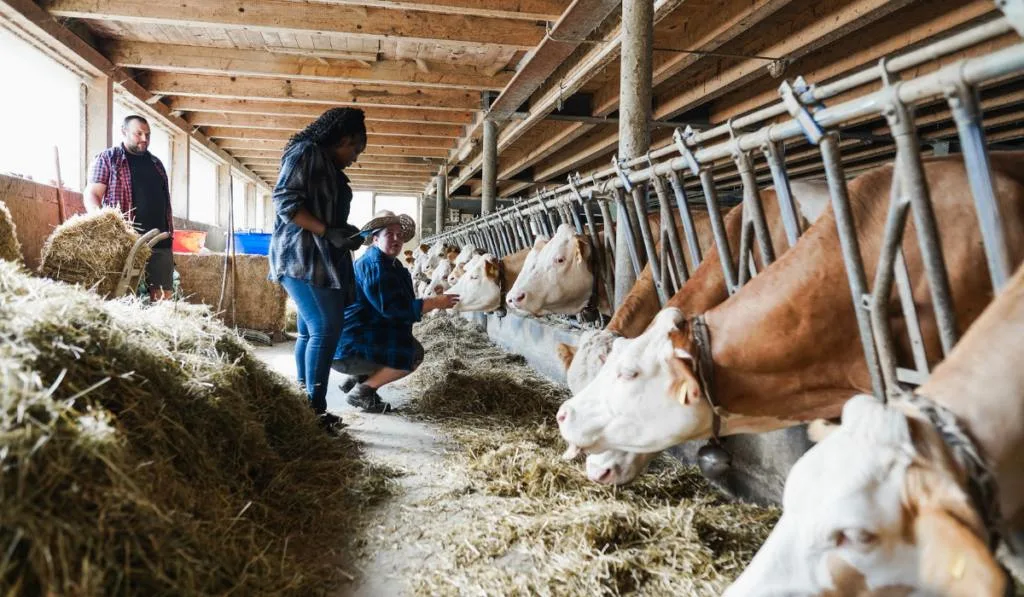
Things to Know
Cows Need Hay During Winter
Cows need hay during the winter when grass is scarce. Hay and even a little extra hay will give cows the energy they need to stay warm during the cold months.
Cattle Can Eat Dusty Hay or Hay Wetted by Rain
Cows can eat hay that is a little dusty or moldy, unlike horses.
Horses shouldn’t eat hay that’s been rained on because it can grow mold, which is dangerous for horses. Conversely, cows can eat hay that’s been wetted by rain because the possible mold will not harm them.
If hay is too moldy, it can cause unintended abortions in a pregnant cow, but it should not cause many problems for non-pregnant cattle.
The Protein Content of Hay Will Vary
Every hay bale and every hay crop carries a different crude protein content based on how the farmer grew and harvested them.
The numbers provided in this article are just an estimate of the averages to give you an idea of which types of hay have higher or lower protein content.
To know the true protein content of any hay, you must have it tested by a professional.
This is often the best option if you are struggling to keep weight on your cattle and need to know more exact numbers.
Dairy Cows Require Higher Quality Hay
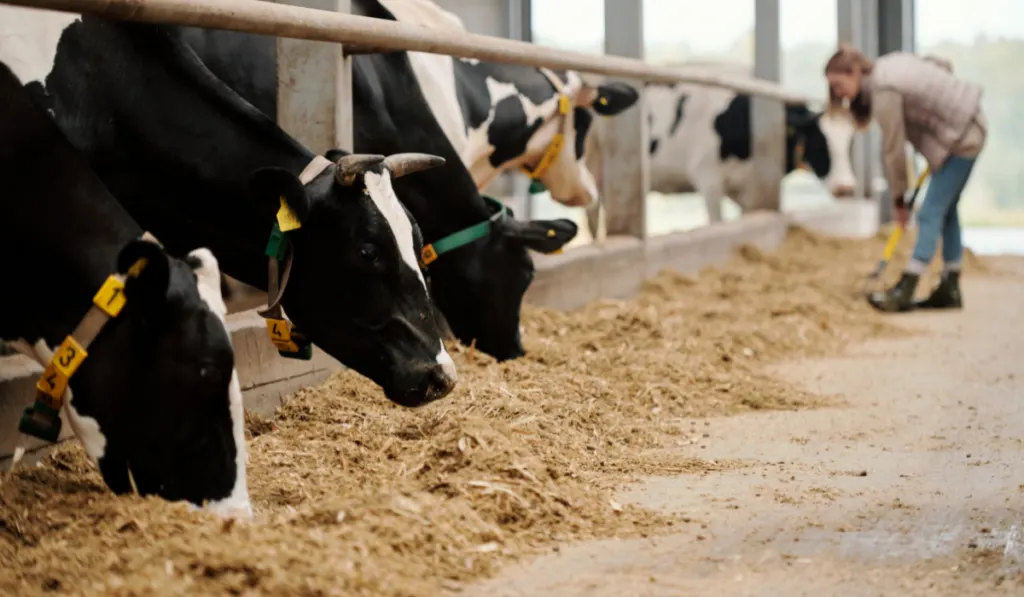
Female dairy cows are usually either pregnant or lactating, so they need more protein and calories than other cows. This means they need hay that is of higher quality and provides more nutritional reserves than beef cows.
Check Hay for Twine, Rocks, or Wire
There is no way to check inside hay bales when you first get them, but you can keep an eye on the hay as cows eat through it.
Be sure to remove all the twine, netting, rocks, or wires that you see in the hay, as cows often eat quickly without knowing exactly what they are eating.
Final Thoughts
If you own cattle, you know that you will not be selecting just one type of hay that is best for your cattle. You will have to know several different types of hay and whether they are good for your cattle.
With the different types of hay discussed here, you should have no problem coming up with a few acceptable options for your beef or dairy cattle.
Resources:
I used my knowledge and experience with cows along with these sources to write this article.
- https://uknowledge.uky.edu/cgi/viewcontent.cgi?article=1156&context=ky_alfalfa#
- https://ker.com/equinews/coastal-bermudagrass-horses/
- https://www.feedipedia.org/node/12386
- https://www.standleeforage.com/nutrition/nutritional-papers/big-two-forage-grasses-timothy-and-orchard/
- https://www.beefmagazine.com/data-table/barley-hay-0
- https://www.aces.edu/blog/topics/beef/ionophore-inclusion-in-cattle-diets/#
- https://www.feedipedia.org/node/375
- https://www.guinealynx.info/hay_chart.html
- https://www.jambackfarms.com/smooth-bromegrass
- https://www.standleeforage.com/standlee-barn-bulletin/benefits-of-oat-grass-hay-for-horses/
- https://agrilife.org/agnewsandviews/2018/05/07/what-is-coastal-tifton-85-and-jiggs/
- https://www.standleeforage.com/standlee-barn-bulletin/benefits-of-oat-grass-hay-for-horses/
- https://www.anderson-hay.com/timothy-hay-for-cows#
- https://www.iamcountryside.com/fences-sheds-barns/selecting-hay-for-cattle/
- https://www.feedipedia.org/node/246
- https://agricsite.com/types-of-hay-for-cattle/
- https://www.standleeforage.com/standlee-barn-bulletin/feeding-orchardgrass-hay-to-horses/
- https://www.beefmagazine.com/data-table/bromegrass-hay
- https://thehorse.com/113734/the-grass-guide-smooth-bromegrass/#
- https://madbarn.com/feeds/tall-fescue-hay/
- https://www.ralcoagriculture.com/post/fescue-toxicity-in-cattle-how-to-manage-it
- https://justformyhorse.com/tifton-85-is-a-great-grass-hay-alternative/#
- https://www.noble.org/news/publications/ag-news-and-views/2010/may/annual-ryegrass-a-double-edged-sword/
- http://www.ryegrass.com/publications/ryegrass-forage-brochure.pdf
- https://www.feedipedia.org/node/11535
- https://www.agric.wa.gov.au/livestock-biosecurity/annual-ryegrass-toxicity-livestock
- https://www.iamcountryside.com/fences-sheds-barns/selecting-hay-for-cattle/
- https://www.gov.mb.ca/agriculture/livestock/production/beef/print,extending-livestock-feed-supplies-section-three.html#
- https://www.wardlab.com/prussic-acid-in-livestock-feed-myths-vs-facts/
- https://extension.sdstate.edu/reed-canary-grass-possible-prussic-acid-alkaloid-issues
- https://premiumhayfarm.com/product/sudan-grass-hay-for-sale/
- https://beef.unl.edu/oats-for-fall-pasture-or-hay
